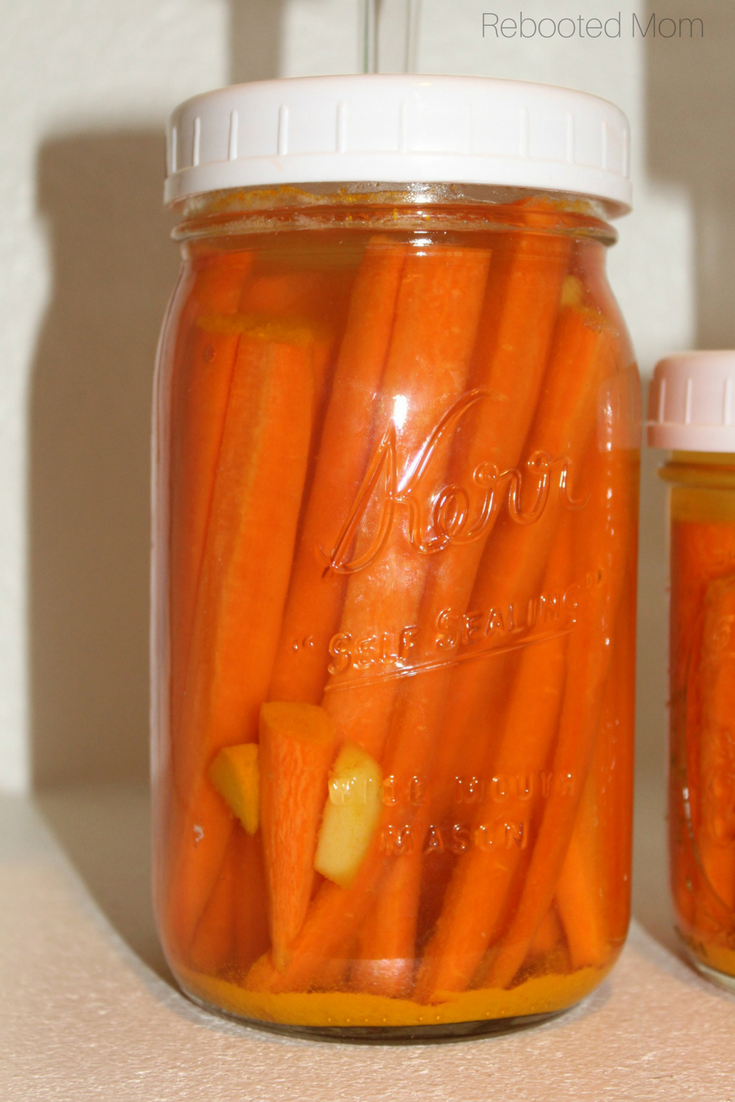
There is no secret that I absolutely love fermented foods – Kombucha is a pretty popular drink around our house and my kids get really upset when we run out and don’t have any left.
We recently spent a few days out of town and had quite a huge fridge of local farmers market produce – we didn’t want it to waste while we were gone, but we certainly couldn’t eat it all in a span of one single night. One of the best ways to use up produce quickly is by throwing in a jar and fermenting with some brine – so that is what we did.
Fermented carrots are also amazing for gut health – unlike kombucha, carrots are fermented using lacto-fermentation. When you ferment carrots, you simply combine a brine of salt and water that works hard to prevent the growth of bacteria and fungus.
That same brine also serves a dual purpose by providing the perfect environment for lactobacillus (the bacteria that leads to lactic acid) to grow. We added ginger and turmeric for flavor – my turmeric seems to like to float to the bottom even though I seem to stir, stir and stir…
But when they were done, the flavor was definitely there. ?
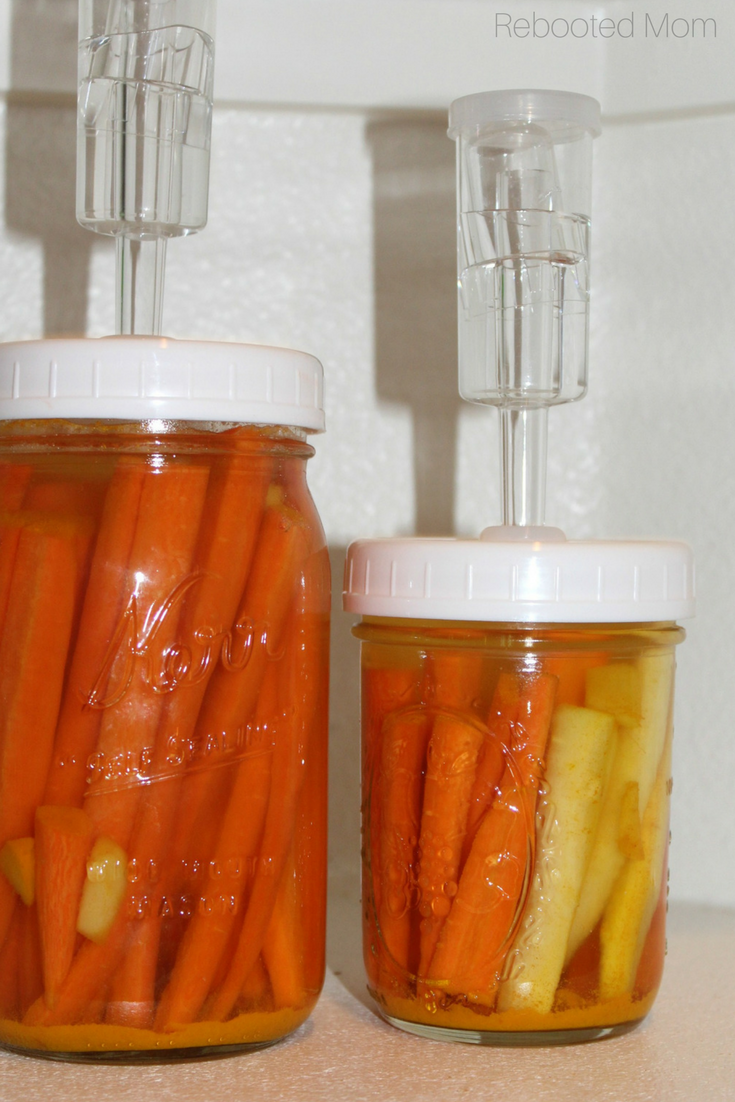
To successfully lacto-ferment anything, the veggies have to be submerged under the brine completely. You can tuck a jelly jar inside of a wide mouth canning jar to keep the veggies submerged. Or.. you can take the avenue of filling up a ziploc bag with a little brine solution and placing that in the top of the jar to keep the veggies submerged.
Or, if you do enough fermenting, then you may want to invest in a set of fermentation lids (like we have pictured above). They aren’t all that expensive and you will have a more controlled fermenting environment without the worry. The lids with airlock pictured above are available on Amazon in a set of 3 and come with instructions on how to use them.
To ferment carrots, you can opt between shredding them in your food processor, or cutting them into sticks – I find that cutting them into sticks is easier to keep them submerged than shredded – but do what works for you!
The quart jar actually allows me to push those carrots just under the lip of the jar, so they stay under brine – and then I pack the smaller pint jar really tight so they can’t really float up like they would if they were shredded. Let the jars sit in a dark area (my pictures are light, because I had the pantry light on) – I choose my pantry because it’s easy to keep everything an even temp.
What you’ll need to make lacto-fermented Turmeric Ginger Carrot Sticks:
- 1 quart size (or 2 pint size) wide mouth mason jars
- Fermenting lids with airlocks or 2 small jelly jars
- Sea Salt
- Ground Turmeric
- 1 1/2 lbs carrots
- 1" chunk of fresh ginger
- 1/2 tsp turmeric powder
- 2 tsp sea salt
- 2 C. distilled water
- Combine the sea salt and turmeric with the filtered water - give it a good stir to make sure the salt dissolves.
- Peel and cut the carrots - make sure your carrots will fit into the jar.
- Peel the ginger and slice into discs or chunks and set aside.
- With the jar upright, add the ginger at the bottom. Then, start inserting your carrot sticks. You may need to turn the jar on its side to make sure that you fit all your carrots in there nicely.
- Continue to stack all your carrots in the jar until your carrots are exhausted.
- With the jar sitting straight up, pour the brine solution in, making sure to cover your carrots completely but leaving 1/2 inch of headspace at the top of the jar.
- Place the fermenting lid on your jar, and pour in 1 1/2 tsp of water in the airlock. Or, if you are not using a fermenting lid, use an alternative (ie. jelly jar or, glass weights from the floral section of the craft store) to keep the carrots submerged and simply cover with a cheesecloth and rubber band. If you are using a tight lid, burp daily to release pressure.
- Set in the dark area of your pantry, in temps of 68-75 degrees, for 7-14 days. Over the first few days you will see little activity, then on day 3-4 you may see small bubbles (fermenting activity).
- After 7-14 days, replace the airlock with a regular canning lid and move to your refrigerator. Enjoy!
Enjoy your carrots – the flavor gets better as they age! They are great for kids to snack on and even better to take for lunches at work or as a simple snack at home.

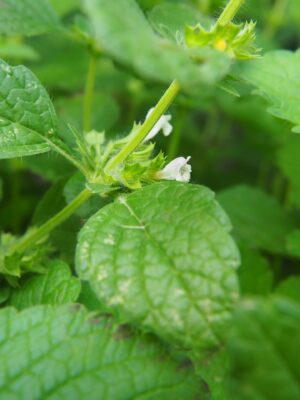
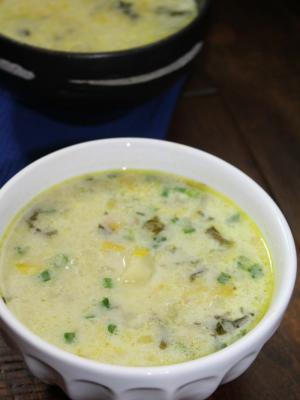
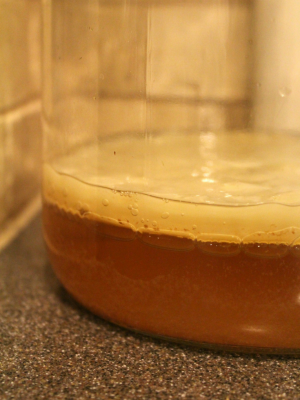
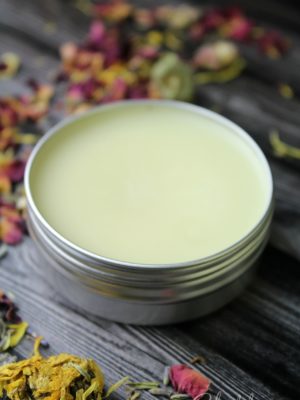
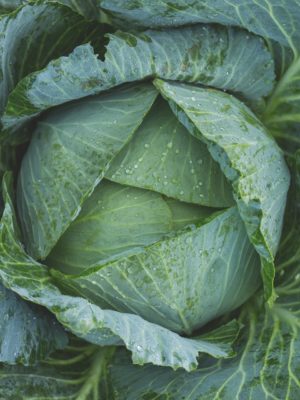
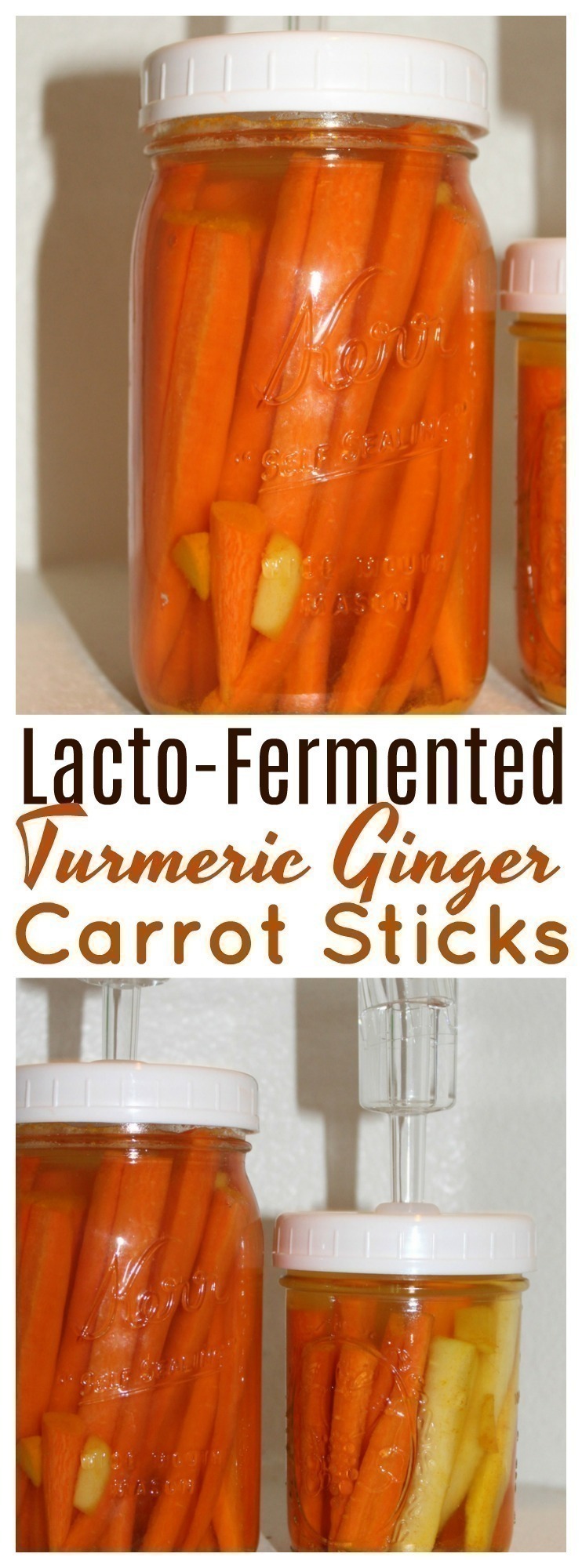

Thank you for a well written, clearly explained recipe with enough background information to put things in context, without your life history as preface. 👍